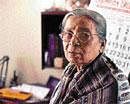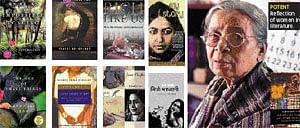

There seems to be some sort of oppositional relationship between good life and good literature. Bad times and experiences — poverty, personal tragedies, social injustices, oppressive regimes and political anarchy seem to lend themselves to creating writing which is true, clear and searing. On the other hand, an ease of circumstances seems to lend itself to trivial pursuits.
A case in point could be women’s fiction coming out of India in recent years. Women in India (or at least the upper class, swish set women) have never had it so good before in terms of individual liberty and the freedom to express and achieve and to live life on their own terms. And yet, what we have to show for it in literary terms is a rash of mostly avoidable chick-lit titles.
Much of the chick-lit being churned out of late is so formulaic that one wonders if it has its origins in a common plot generating software: eg, Ms Sassy Something of (TamBram/ Delhi Punj/ Bong Bombshell/ any other ethnic persuasion) escapes her domineering/ cloying/ embarrassingly garrulous (choose one or more) obsessed with matrimony (mandatory requirement) mother and makes an independent entry into the world of fashion/ banking/ hotel industry/ advertising/ any other and begins to look for love amongst the male stereotypes (cold, corporate Mr Darcy-type/ Randy Dandy Heartbreaker-type/ Good Pal But Not Sexy Enough Bloke Next Door-type/ choose all but remember Mr Darcy-type gets the girl) and finds it after a couple of false turns... The End/ Leave Open Ended (to accommodate sequel if wildly successful).
At the heart of all good fiction, we’re told, lies conflict but in a world where God wears Gucci and the devil wears Prada we are increasingly getting heroines who pay more attention to their handbags and shoes than to their dramas and feelings. It’s as if the props and the costumes have become the main story.
In literary fiction too we are sorely missing women of stature in recent times. Instead, it seems to be the era of girl-women such as Arundhati Roy’s Rahel in God of Small Things, or Kiran Desai’s Sai in The Inheritance of Loss, or Bakul, the heroine of Anuradha Roy’s An Atlas of Impossible Longing. They come to us obliquely, the main stories happening around them or to them, and not full frontally as mature actors responsible for what happens.
The truth is women protagonists in Indian fiction were far more interesting in the World BC — Before Chick-lit, that is. Women writers such as Ismat Chughtai, Krishna Sobti, Qurratulain Hyder, Shivani, Mahashweta Devi and Kamla Das gave to us women on the frontlines of conflict — emotional, sexual, social and political. Ismat Chughtai’s story, Lihaaf (Quilt), written in 1941, created a stir and earned a court summon for its author when it gently and humorously prised open the secrets of the zenana or women’s quarters of an upper class Muslim family and revealed a lesbian relationship between the beauteous Begum Jaan and her swarthy maid Rabbu.
Tahira Naqvi, in her foreword to her translation of Chughtai’s later novel, Terhi Lakeer (Crooked Line), points out how the work pre-dates Simone De Beauvoir’s seminal and much celebrated The Second Sex by five years and matches it in its exploration of early childhood experiences and conditioning on the feminine psyche and in a woman’s relationship to her body.
In Krishna Sobti’s 1966 novel, Mitro Marjani, she gave the world a woman it could love or hate but not be indifferent to, as a brazen and unapologetic Mitro explores her sexuality within the confines of a traditional joint family in a language which was shocking in its frankness. It was with Mitro’s language and her willingness to engage with the issue of desire rather than her actual choices that Sobti raised the bar on how far a woman writer could go to explore her truth.
Another book well ahead of its times was Kamala Das’s fictionalised autobiography, My Story, written from a hospital bed and first published in 1977 in a serialised form to pay the hospital bills. It was the story of one woman’s candid quest for love, inside and outside marriage, written with the deliberate intent to titillate and to shock society out of its stock understanding of man-woman relationships in general, and marriage in particular.
As far as social commentary and political activism within the folds of fiction go, few can match the precision and power of Mahashweta Devi’s writing. Her over 100 novels and 20 collections of short stories add up to a formidable body of work, advocating the cause of the dispossessed and the marginalised, mainly tribals and women.
In her story Draupadi, set against the backdrop of counter-insurgency operations against Naxalites in 1970s Bengal, she gives us the character of Dopdi Mehjen who, subjected to multiple rape, abuse and torture by state, turns the classical Mahabharata tale on its head and asks not for an unending sari, but strips herself naked and in a fiery closing scene challenges her tormentor, “You can strip me, but how can you clothe me again? What more can you do? Come on, kounter me — come on, kounter me?”
Meanwhile, the earlier generation of novelists writing in English also brought to us women who articulated the reality of women re-defining their identities and relationships in an India at once modern and traditional. Whether it was the character of Bim in Anita Desai’ s The Clear Light of Day trying to find the fine line between personal independence and familial responsibility, or Shashi Deshpande’s Urmi in The Binding Vine, an educated college lecturer dealing with the issue of a young girl’s rape and how speaking about it creates further problems for the victim in a society where honour is a paramount concern, or Nayantara Sahgal’s Sonali in Rich Like Us, a civil servant grappling with issues of class privilege and political power against the backdrop of the Emergency, these were real women who took us with them into their multi-layered and complex reality.
Granted that much of what’s spilling out of the bookstores these days is meant to be light-hearted and humorous, but we still deserve better than spoilt divas in designer sunglasses who hope to amuse us with the cursory toss of a brand name or two, while they try to figure out the answer to the post-modern woman’s most agonising existential dilemma — what does one really need to be happy in life — true love or good sex? The answer, dear girls, is both. And you certainly can’t get there by faking it.